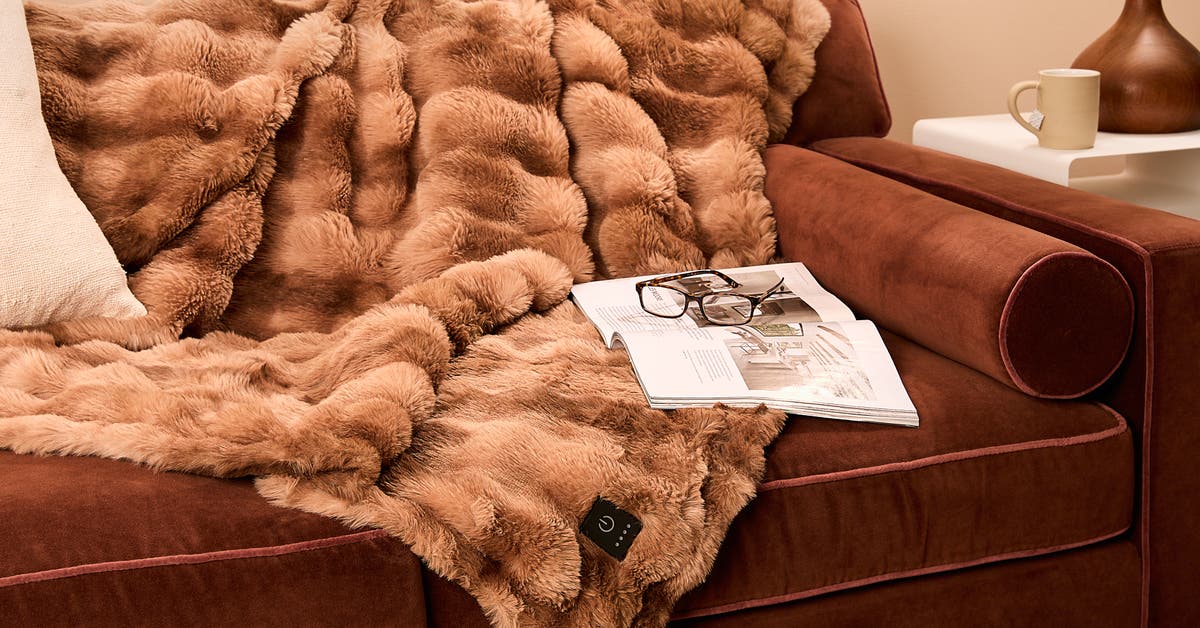The 3 Best Electric Blankets of 2025
We tested only the electric blankets that met certain safety criteria, such as having certifications from independent testing labs like UL and Intertek (the ETL Mark) and having auto-off mechanisms in the remote. We also examined any outstanding recalls and safety reports from the Consumer Product Safety Commission, read hundreds of customer reviews, and narrowed our search to blankets that are machine-washable.
We looked for blankets that are not only safe, but somewhat stylish. We ultimately settled on eight contenders, which we evaluated in our office in the hopes of finding the following:
Even heat distribution: I tested blankets in sizes ranging from throw to queen, covering myself shoulder to feet under each blanket and noting whether my feet were feeling the same level of warmth as my upper body. As for the queen-size blankets, which often have two separate remotes for each side, I tried them with a colleague on a bed, noting whether the dual heating system really worked.
A user-friendly controller: I assessed how intuitive the buttons on the remotes were in controlling the temperatures, how easy they were to read and operate, as well as how bulky or comfortable they felt in my hand.
A pleasant texture: Electric blankets are typically made of polyester, a fire retardant that’s also low-maintenance. But some polyester fibers are higher-quality than others; and thoughtful construction also makes a difference. I assessed how the fabric of each blanket felt on my skin, noting any features or textures that might feel annoying to some people. I also evaluated to what extent you can see and feel the wires.
Good temperature range: Many heated blankets have controllers that you can use to adjust the temperature, with anywhere from three to 20 settings. I tested every level on each blanket to evaluate if there were significant differences between settings. According to UL standards, the maximum temperature for an electric blanket is 149 °F, and it’s designed to maintain that temperature until you lower the settings or shut it off. I took note of whether each blanket was successfully heated throughout and whether it got too hot.
Quick heating: I tracked how long it took for each blanket to warm up upon turning it on and how quickly it adjusted between heat levels. Once on, it typically takes 10 to 15 minutes for the blanket to reach its maximum heating capacity.
Washability: The cleaning directive for most electric blankets is to wash on low with cold water and tumble dry on low heat. During our tests, I washed each blanket as instructed on the care label and noted any changes in the texture, appearance, performance, and construction of the blanket. (While all of our picks are machine-washable, experts suggest limiting the number of washes to once or twice a year to increase the blanket’s longevity.)
Durability: Though electric blankets are typically made of polyester, the construction and quality differed widely. I inspected the seams, carefully stretched the fabric by hand, and noted how prone the blankets were to shedding and pilling when used or washed.
In the following weeks, I used an electric blanket as I normally would at home: I lounged on the couch with it, I lay under it in bed, and I worked on my laptop with it in my very air-conditioned office. Some were unreliable; others wouldn’t stop shedding. But three pleasantly surprised me and work as great as they look.






